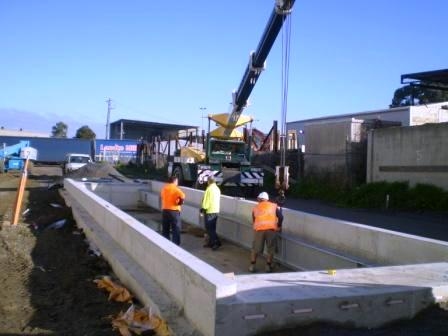
An Explanation of Various Types of Weighbridges
Weighbridges (or truck scales) are crucial in many industries, including manufacturing, agriculture, and transportation. They accurately measure the weight of large vehicles carrying various loads.
In order to cater to the need for accurate measurement in varying conditions, weighbridges need to be adaptable. As a result, there is no one size fits all system. Instead, there are different types of weighbridges with unique features. Let’s take a closer look at each one.
-
Pit Mounted Weighbridge
As the name suggests, pit-mounted weighbridges are built into a pit, making the platform of the scale level with the road surface. This type of weighbridge is suitable in locations with limited space or where maximum vehicle movement is required. The design is more resistant to wind forces and allows for easier vehicle alignment due to the large flanged beams on either side. While pit-mounted weighbridges may require more initial labour for installation due to the excavation involved, they offer several benefits, including:
- Minimal space requirements.
- Enhanced traffic flow as drivers do not need to manoeuvre up and down ramps.
- Vehicles can approach from any direction.
-
Surface Mounted or Above Ground Weighbridge
Also known as a ‘deck’ or ‘platform’ weighbridge, a surface-mounted weighbridge is built above ground level and typically requires ramps on either side for vehicles to access. This weighbridge is ideal in areas where excavation may not be viable or desirable. Key features and benefits of this weighbridge are:
- Easier and less costly installation than a pit-mounted weighbridge.
- Portable and adaptable to changing site conditions.
- Longer service life due to reduced exposure to soil and water.
-
Portable Weighbridge
These weighbridges are designed for easy relocation and installation. Most users apply their use in temporary facilities such as construction or mining sites. Many portable weighbridge designs are modular, allowing easy and quick assembly and disassembly. Their salient features include:
- Flexibility in relocation.
- Short installation time.
- Adaptability to several applications.
-
Concrete Weighbridge
Concrete weighbridges offer durability and longevity. Their construction involves a reinforced concrete deck over a steel frame. This type is ideal for harsh environments as it can withstand heavy loads and corrosive materials. Some of the advantages of concrete weighbridges are:
- Resilience to wear and tear.
- Optimal performance in harsh environmental conditions.
- Enhanced grip for vehicles, reducing the risk of accidents.
-
In-Motion Weighbridge
These weighbridges use sensors and software to provide accurate measurements. In-motion weighbridges are particularly beneficial for time-constrained operations as they don’t require the driver to come to a complete stop before weighing the vehicle.
While the type of weighbridge best suited for a particular operation depends significantly on the specific needs and conditions present at the site, understanding the characteristics, benefits, and use cases for these primary types of weighbridges is crucial. These weighbridges have transformed how industries measure and monitor the weight of goods, ensuring accuracy, fostering safety, boosting productivity, and playing a vital role in maintaining the integrity of the trade. Therefore, contacting a knowledgeable, reputable supplier to source a quality weighbridge to incorporate into your business is best.







